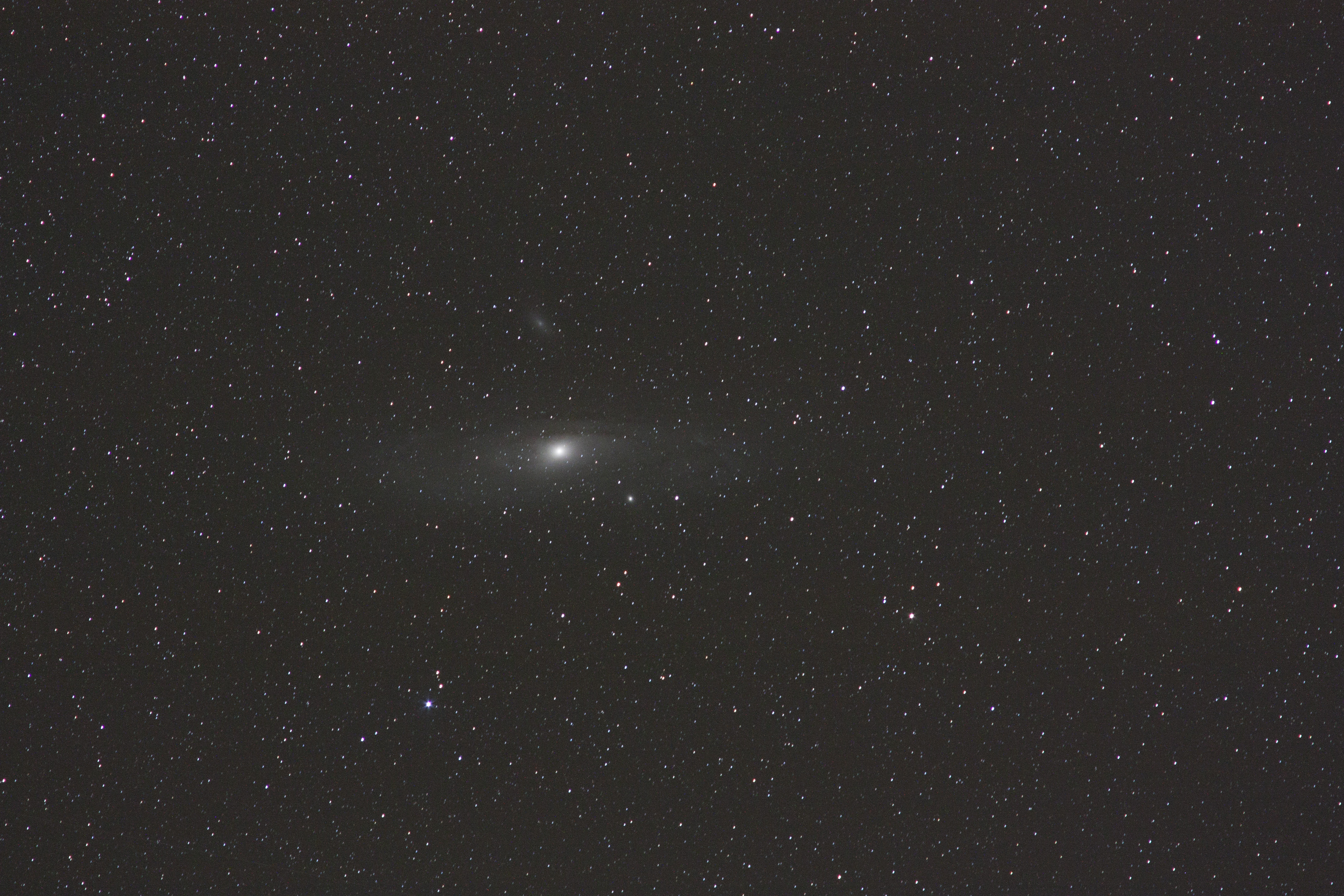A little introduction to my hobby: Astrophotography
Did you know that there is an object in the night sky, which is approximately six times the size of the moon, but much more spectacular? It is the Andromeda galaxy (M31), which you can see with your naked eye, but you will need a really dark site, far away from the light pollution of the big cities to find it. With your naked eye you will see something like a white and milky spot in the Andromeda constellation.
I´m a huge fan of Astrophotography and I just want to share a picture which I have taken by myself in my backyard from this beautiful galaxy.
To bring this (not real bright) object onto your camera sensor you need really long exposure times, often more than 10 minutes, because more exposure time is more light that reaches the sensor. I had an exposure time of 3 minutes for this picture, here you can see a raw file straight from the camera without editing.

RAW image straight from the camera
But you need to consider that you can't just point your camera to the night sky and set the exposure time to three or more minutes, you will have startrailes on your pictures because the earth is rotating. But there are specific astronomical, so called "tracking mounts" or "sky tracker". These mounts will also rotate in the right speed to compensate the rotation.
What you can see when you look at the raw image is that there is a lot of noise and very few signs of the galaxy in the picture. This is called a bad signal to noise ratio. To minimize the noise and get more information about the parts you really want, in my case the Andromeda galaxy, you will need to take more images and combine them in a process called stacking.
In Astrophotography you often take a lot of (sometimes hundreds) of pictures of the same object. I took about 20 pictures of the galaxy and stacked them together to get a better signal to noise ratio (I used the freeware DeepSkyStacker).
Finally, I did some image processing in Lightroom and Photoshop to bring out more detail, so this is my final result.

Final Image of the Andromeda Galaxy
Imaging Details
| Setting | Value |
|---|---|
| Camera | Canon EOS 450D (unmodded) |
| Lens | Pentax Takumar 200mm @ f4 |
| Mount | Sky-Watcher Star Adventurer |
| Lightframes | 20 x 180s |
| Darkframes | 20 |
| Biasframes | 20 |
Also used an intervalometer for imaging. I was taken on a clear, warm late summer night in october 2017, near Dresden, Germany.
Except the tracking mount you don't need expensive high end photo gear to take such shots. I used a Canon 450D (Rebel XSi in US) and an old used Pentax 200mm lens.
I will share more pictures (and perhaps going a little more in detail) if i get the time and the right weather, but there are clouds all over the sky for days here in Germany :(